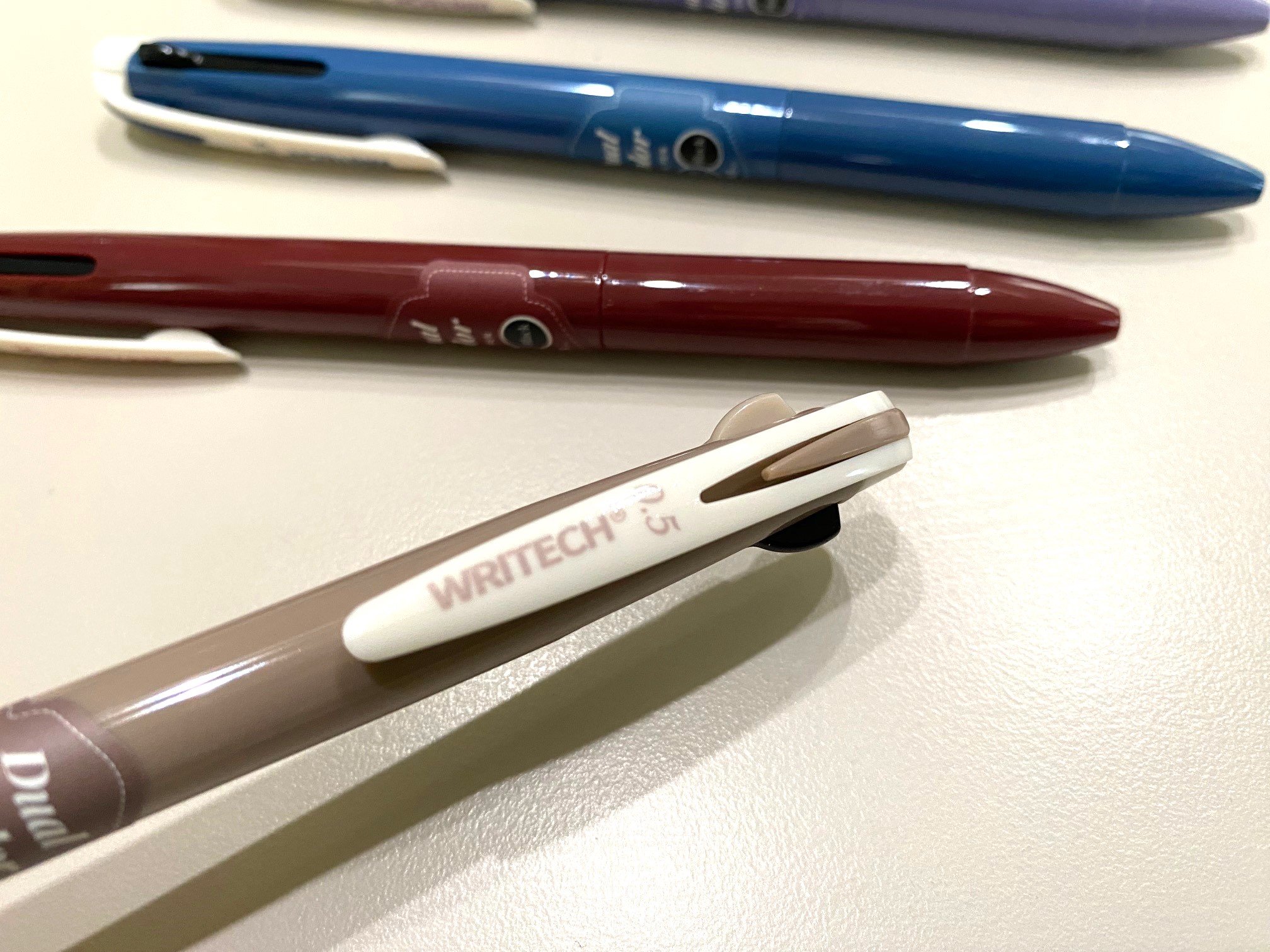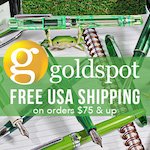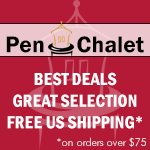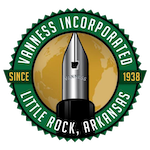(Sarah Read is an author, editor, yarn artist, and pen/paper/ink addict. You can find more about her at her website and on Bluesky. And her latest book, The Atropine Tree, is now available!)
Every now and then I open a new pen and it's a favorite at first sight. The Leonardo Momento Zero Grande 2.0 Guilloche gave me instant heart-eyes when I opened the box. It looks amazing. The texture, the finish, the colors--all perfect. I liked the look of it so much that I actually got nervous, because what if the writing experience didn't live up to the looks? There was no need to worry. This is a fantastic pen.
The body of the pen is a cool-toned blue resin that is subtly etched with a geometric guilloche pattern that resembles ears of grain. Each of the different colors has its own etching pattern. This color is called "indigo," though it looks to me to be more of a slate grey-blue. There is also “Iris” which is dark blue and “Verdigris” which is a sage green. They're all gorgeous. The Indigo is the only one that comes with the ruthenium trim, and the gunmetal grey looks perfect with the moody blue tones. The clip is slim and fairly flexible, with a tiny wheel at the bottom to make the clipping process smoother. The cap and piston knob have metal bands that add a decorative reinforcement to these stress points. Speaking of points, both the top and bottom finials are gently pointed. The overall look is very Art Deco vintage elegance.
Under the twist cap, the grip section is engraved with "Leonardo Italy" and you're greeted with a clear resin ink window, so you can keep track of your ink supply. This is a piston filler pen, so the back end unscrews to move a plunger inside the pen that draws ink in through the nib from a bottle. It is my personal favorite ink filling mechanism, as they tend to hold quite a lot of ink, as this one does, but they can be more difficult to clean. There is no way to disassemble the pen for cleaning, so rinsing ink out is a matter of repeatedly filling the pen with water and releasing it till it runs clear. It takes longer and is less effective than a filling system you can take apart, but it's worth it to me for the higher ink capacity, and I don't like reassembling tiny pen pieces after cleaning. I'm always afraid I'll drop one. So, I prefer this. There's no fear of a precious nib falling down the drain.
They all come with either a Fine nib or a Flex Fine nib. Mine has the Flex Fine, because I like a bouncy writing experience. The nib has its sides cut out to create a narrow neck that flexes when pressure is applied. The flex nib also has "Leonardo elastic" engraved on it. This is very much a modern flex nib, which is to say that it's not super flexy. It can take some light pressure and provide some slight line variation, but it isn't bendy like a vintage flex pen would be. What I love about it is that I can get fine lines when writing, but it still has a softer writing experience, and often flex nibs have better ink flow. This combination is perfect for me when I want a longer writing session. Writing a whole short story in one sitting, but don't want to run out of ink or get hand fatigue? This is your pen. Well, no. This is my pen. But you can have one, too.
The Leonardo Momento Zero Grande 2.0 is available on JetPens for $289, which is perfectly fair. It's a fancy pen and it has a fancy pen price. It is, however, much nicer and more solidly built than some pens that are considerably more expensive. When it comes to measuring cost against quality, I think Leonardo is at the top of the game when it comes to mass-produced pens. All of their pens that I've used have been winners, and this is my favorite one, yet.
Enjoy reading The Pen Addict? Then consider becoming a member to receive additional weekly content, giveaways, and discounts in The Pen Addict shop. Plus, you support me and the site directly, for which I am very grateful.
Membership starts at just $5/month, with a discounted annual option available. To find out more about membership click here and join us!






























